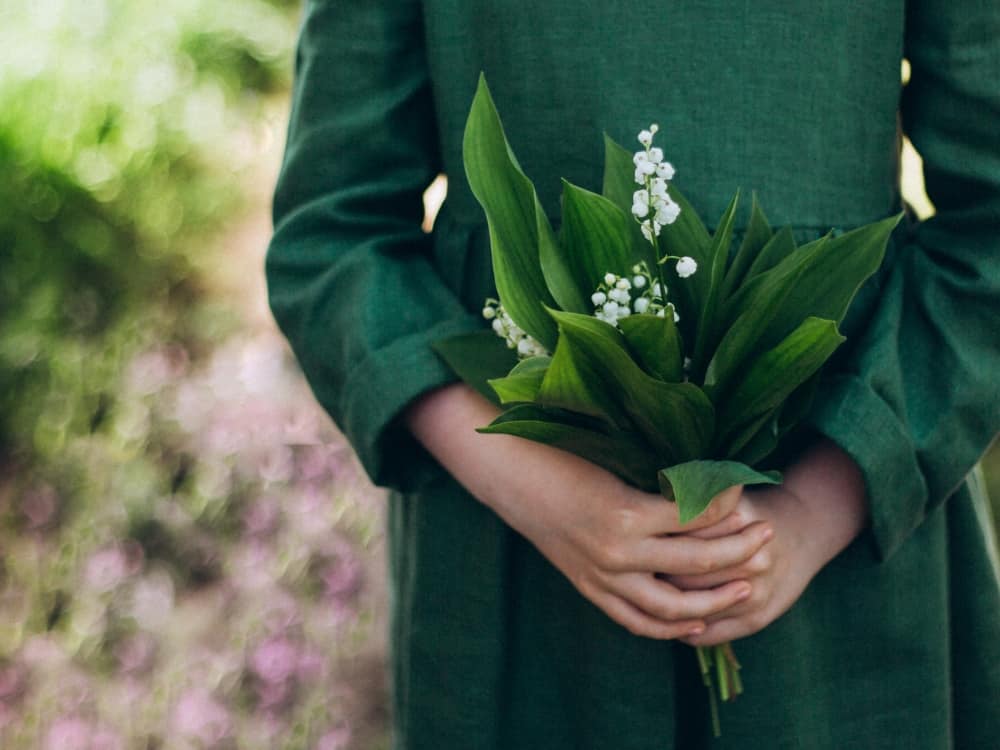
What Is Linen Fabric?: Digging To The Roots Of Linen Sustainability
In a world where fast fashion trends come and go faster than you can say “wardrobe malfunction,” one fabric has managed to stand the test of time.
Linen, with its breezy elegance and timeless appeal, has been gracing closets for centuries, making it the ultimate fashion chameleon.
In fact, linen is one of the oldest natural fibers around—it goes back thousands of years, from the mummies in Ancient Egypt to baby Jesus.
But as the world becomes increasingly conscious of the environmental footprint of its clothing choices, we need to understand two things: what is linen fabric and is linen sustainable?
Or is it merely another trend wrapped in eco-friendly packaging?
Let’s unravel the threads of linen sustainability and discover if it’s the real deal or just another fashion fib.
1. What Is Linen Made Of?
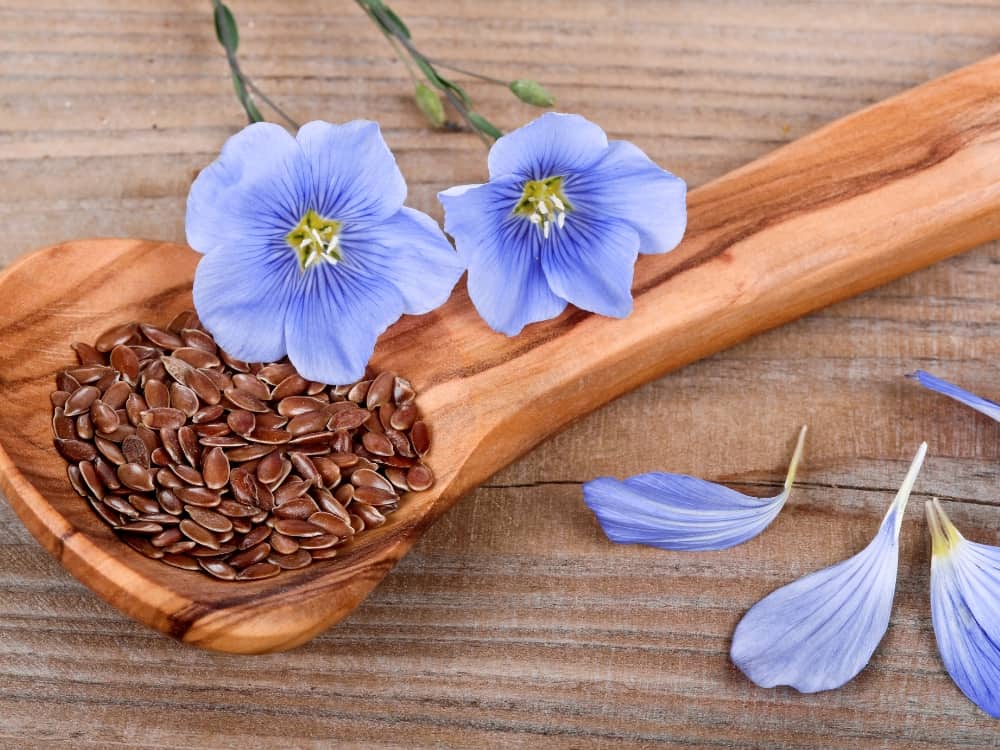
Like other bast fibers (those made from the stem of a plant), linen is made from fibers of the beautiful, blue-flowered flax plant.
The word “linen” is derived from the plant’s Latin name: linum usitatissimum.
For thousands of years (36,000, to be exact, according to anthropological evidence), flax has been used to make fiber, and it has been grown in nearly all countries around the world.
As such, it bears a lot of cultural and spiritual significance, with mentions in the Bible and other religious texts.
In Ancient Egypt, linen was valued so much that it was used as currency. It also symbolized light, purity, and wealth, hence it was the fabric of choice in mummification, at a thread count much finer than we would find today.
Ancient Romans and Greeks used linen as a valuable commodity, and in Mesopotamia, linen was something owned only by those in higher classes.
In Medieval Europe, linen was no longer synonymous with luxury, since the poor (which is to say basically everybody bar royalty) used it for everything, from clothing to fishing nets.
But what is flax linen used for today?
Though its prevalence has certainly been diluted, linen is still used to make reportedly eco-friendly clothing and home textiles, like sustainable rugs and sustainable bedding.
It’s even blended with cotton to make the US dollar bill.
But we’re not here to talk about “greenbacks”; we’re here to talk about the green on our backs. In other words: how sustainable is linen?
To answer that, we need to start by digging deep into the roots of what is linen made from.
2. How Is Linen Made?
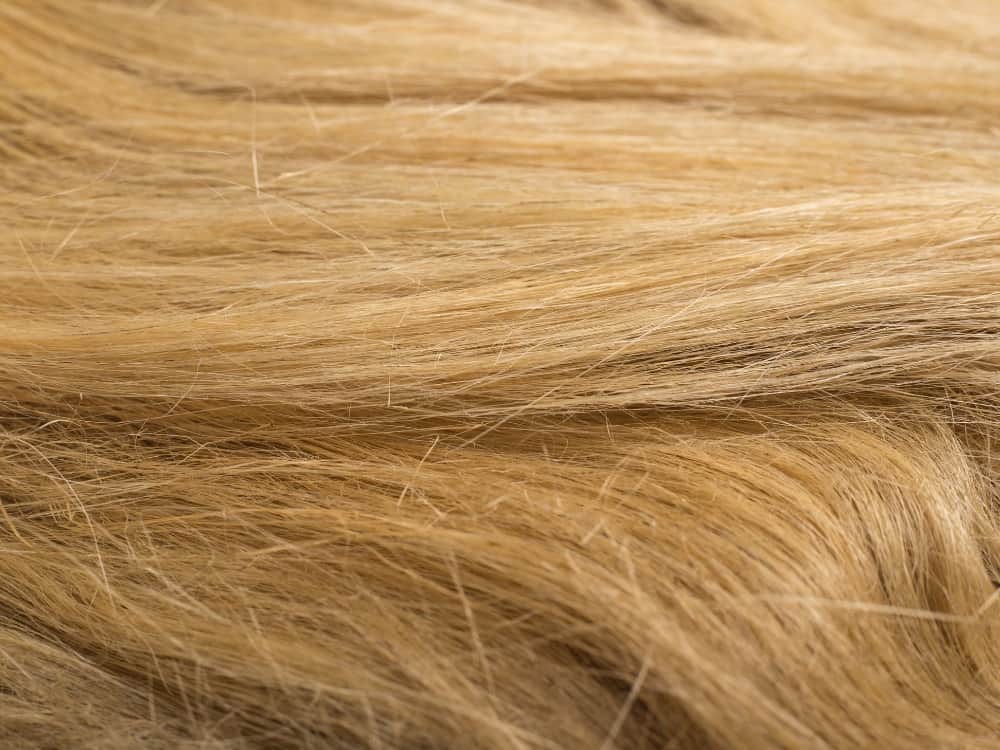
Where does linen come from? Is linen a natural fiber?
It starts with the flax plant, a highly sustainable and hardy annual plant that thrives in cooler climates.
Flax plants grow relatively quickly and are known for their minimal need for pesticides and fertilizers, which contributes significantly to linen fabric sustainability.
From there, the linen making process begins.
1. Harvesting
Flax is ready for harvesting when the lower leaves begin to turn yellow and fall off.
Yielding the longest possible fibers is very important when it comes to linen. For this reason, hand-harvesting is commonly used to pull up the entire plant, a process called “uprooting”.
2. Retting
Retting involves exposing the flax stalks to moisture and humidity.
Traditionally, this step has been accomplished by soaking raw flax stalks or exposing them to moisture in the field, but these days, manufacturers may use chemicals, which yields a less sustainable linen fabric.
This helps break down the pectin that binds the flax fiber to the woody core of the plant.
3. Winnowing & Scutching
Like grain, flax seeds must be removed, a process called winnowing.
After, the woody stalks are crushed between metal rollers. This “scutching” separates them into longer and shorter portions.
The flax fibers are then further combed to remove any remaining impurities.
4. Spinning
The extracted flax fibers are then spun into yarn or thread. This can be done using traditional spinning wheels or modern machinery. The resulting thread can vary in thickness depending on its intended use.
5. Weaving & Finishing
Once the flax fiber has been extracted and separated, the longest pieces are spun into sustainable yarn and then woven on looms into fabric.
If this sounds like a painstaking and laborious process, it is. While mechanization is used in most cases, some linen yarn preparation is still done by hand in the centuries-old traditional manner.
3. Is Linen Environmentally Friendly?
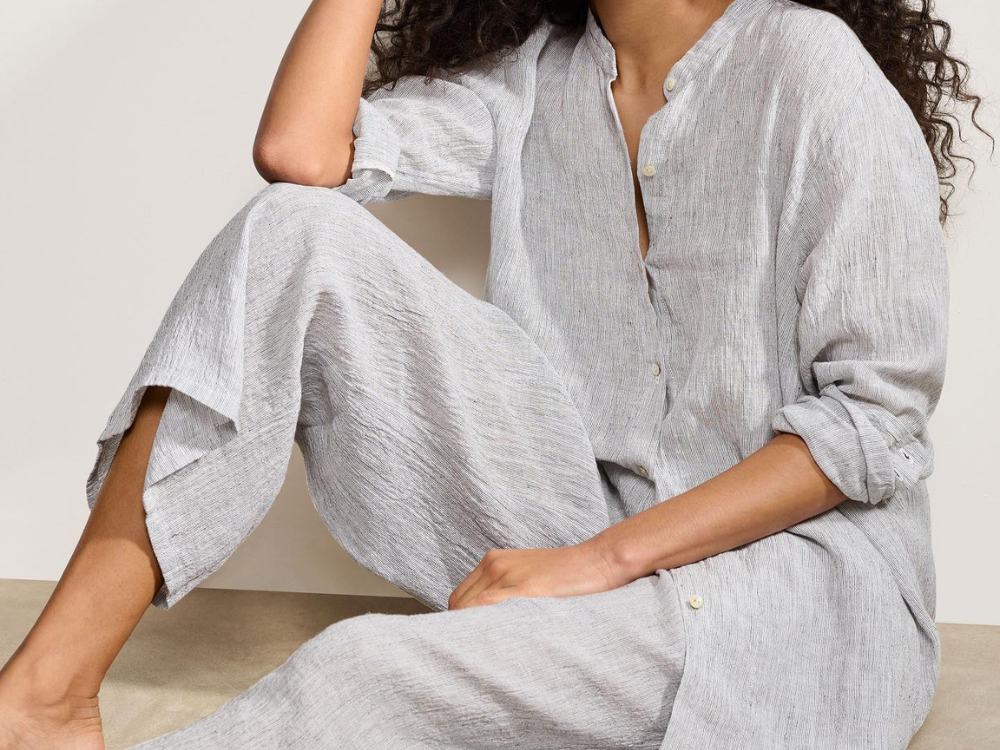
Why Is Linen Sustainable?
Let’s look first at the planetary pros of the flax plant itself:
- The time from planting seeds to harvesting is about 100 days. This is one example of how linen is different from cotton, which takes 150 to 180 days.
- Flax grows well in cool, humid climates and does best in soil that’s moist and well-plowed, like those of Europe. It is thought that Belgian flax is the finest quality flax in the world, but it is also grown in Denmark, the Netherlands, Poland, Austria, France, Italy, Spain, Switzerland, and the British Isles.
- Flax does do well with little water (just rainwater and a little humidity). Only 6.4 liters of water are needed to produce a linen shirt—compared to 2,700 liters for a conventional cotton shirt.
- Non-organic flax needs few pesticides or fertilizers.
- The entire flax plant can be used, including the removed seeds, so nothing needs to go to waste.
- One ton of flax cultivation sequesters roughly 1,158 kg of CO2-equivalents.
Post linen production, the yielded versatile fabric has two big benefits as well:
- Is linen durable?: You bet. Linen durability shines among other natural fibers, meaning it lasts longer than other clothing and upholstery.
- Is linen biodegradable?: Also yes. When linen does reach the end of its life, it doesn’t need to rot in a landfill. Because linen is a natural fiber, it’s fully compostable (provided toxic chemicals, dye, or synthetic fibers haven’t been added).
We don’t want to get (f)lax on painting the whole picture here, so let’s also look at some linen disadvantages from a sustainable fabric standpoint.
What Is The Disadvantage Of Linen?
While the crop is considered to be a good one for ecosystems and the environment as a whole, improper harvesting techniques may cause soil erosion.
The processing of flax fibers into linen fabric can also be resource-intensive, particularly in terms of water and energy consumption.
Traditional methods are much more sustainable, but they’re less efficient and thus less frequently used.
Additionally, depending on the fiber processor, the retting process can either be done naturally via dew retting (in which linen stalks are simply cut and left outside so that natural moisture softens the fibers), or with chemicals like alkali or oxalic acid.
Is Linen Organic?
According to Common Objective’s Made-By Environmental Benchmark for Fibers, organically-grown linen is one of the most sustainable fabrics in the world, earning an “A” (the best rating).
Non-organic linen gets a “C.”
As with cotton, the merits of the plant itself matters far less than how it’s grown.
While pesticides and fertilizers aren’t necessary, excess nitrites (fertilizer) have been associated with flax cultivation and water pollution.
Flax also doesn’t do well when competing with weeds, so in some cases, herbicides are used.
Unfortunately, certified organic linen makes up a paltry percentage of total linen use.
While brands like Eileen Fisher and Coyuchi claim to source exclusively organic linen in the coming years, we still have a lot of work to do to make sure this sustainable fiber is really sustainable.
So is linen a sustainable fabric?
It certainly can be, but its overall sustainability depends on individual processing methods.
4. Is Linen Made Ethically?
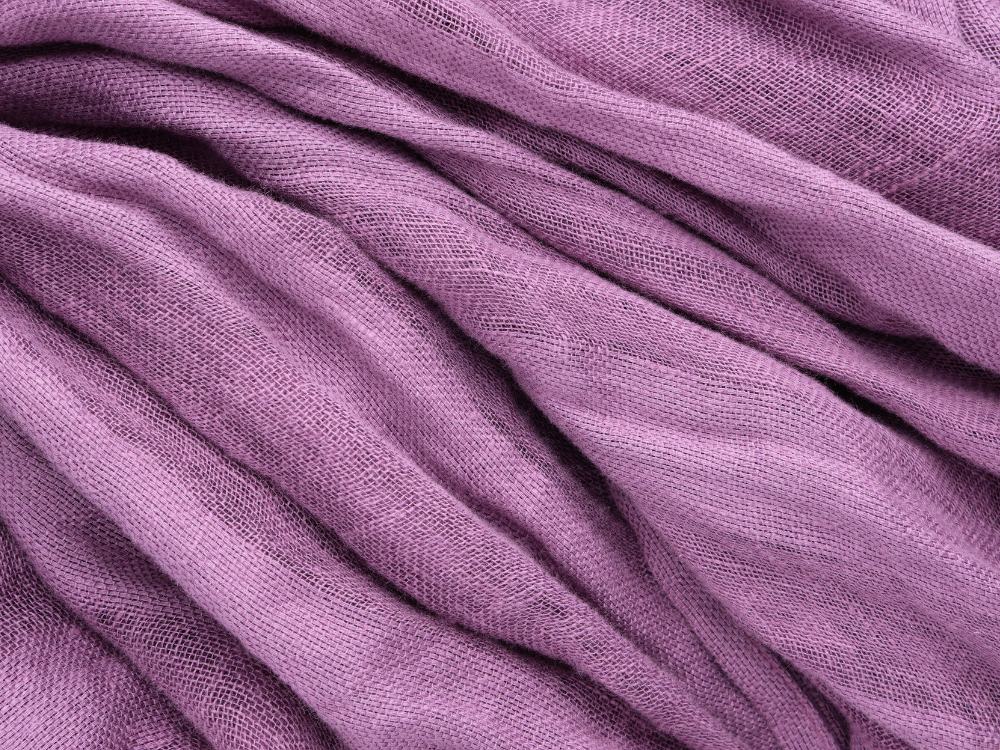
We know linen can be sustainable, but is linen ethical?
Picking flax by hand for hours on end is hugely labor-intensive—and if the work is not supported with fair trade compliant and safe labor conditions, it can spell human rights abuse.
The processing of flax fibers presents some concerns, too, especially when chemicals are used.
In order to up your #SustainableFashion game, look for brands who choose GOTS-certified organic linen.
Being a seed-to-shelf organic assurance, this lets you know water-only or dew retting was used instead of chemical retting.
It also extends to the chemical-free nature of the bleaching and dying process, telling you workers weren’t exposed to chemicals at any stage of the supply chain.
Next look for brands that use fair trade labor practices, either with manufacturing certifications or transparency about their wages and worker protections to back them up.
5. What Are Linen Material Properties?
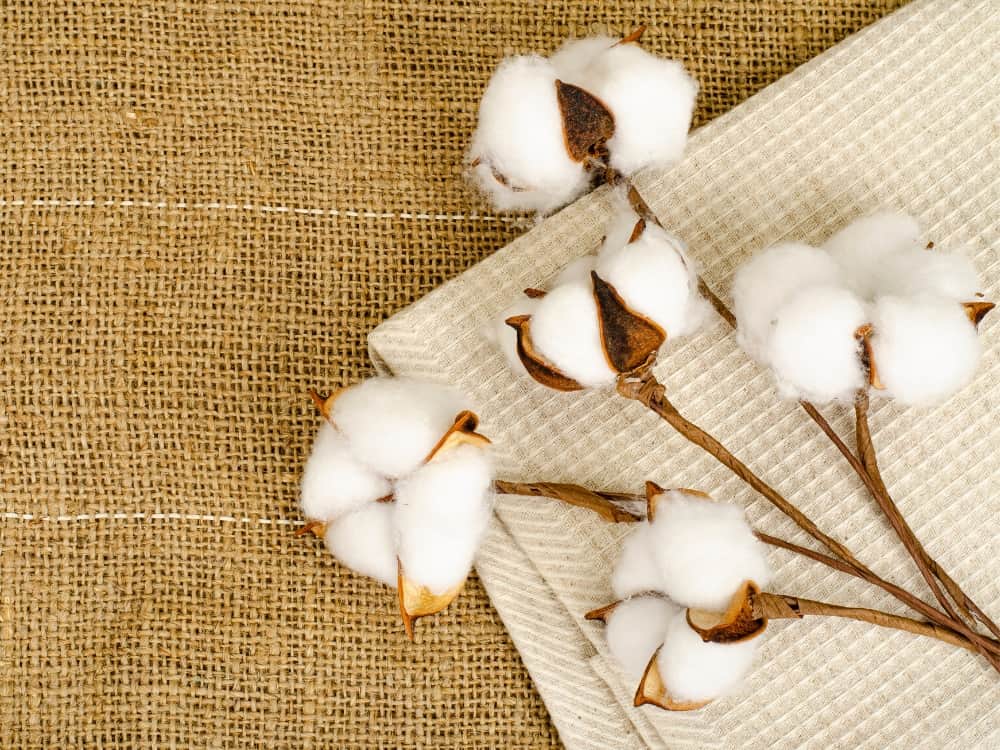
One of linen’s biggest boons is its versatility.
Linen is naturally breathable, moisture-wicking, antibacterial, resistant to allergens, and temperature regulating.
All told, this makes it a desirable choice for clothing, bed sheets, bandages, and much more.
Wondering what color is linen?
Any color! It also has the ability to hold dye colors better than some other fabrics, which means less dyestuff is needed.
What Are The 3 Types Of Linen?
Generally, its softness falls somewhere in between hemp and organic cotton, but there’s a lot of variety in the texture of linen.
Depending on the thread count, linen can either be coarse and cheap enough for the poorest, or fine enough for the richest to covet.
There are three main types:
- Plain Linen: This is the most common and basic type of linen fabric. It is made from the flax plant’s fibers and is known for its natural, slightly textured appearance.
- Damask Linen: Damask linen is a luxurious type of linen fabric known for its intricate patterns and smooth, glossy finish.
- Toweling Linen: As the name suggests, toweling linen is specifically designed for towels and similar absorbent products. It has a dense weave that enhances its absorbency, making it ideal for organic bath towels, dish towels, and cleaning cloths.
Linen Advantages
Let’s talk about the benefits of linen:
- While most people wouldn’t agree that it’s soft to the touch initially, it gets much softer over time. This aids in linen’s durability, too.
- Linen is resistant to sunlight, so it won’t break down after long term exposure to the sun (making it good for sustainable curtains) and protects wearers from harmful UV rays.
- Linen is strong, durable, and does not pill.
- Since the Middle Ages, linen has been used as a soothing fabric, thanks to its hypoallergenic and antibacterial properties.
- Linen is thermo-regulating (i.e. keeping us cool in summer and warm in winter).
- It’s unique! Linen has a natural luster and its irregular fiber bundles give it a texture that is uncommon with other fibers.
Linen Disadvantages
So what is bad about linen from a wearer’s perspective?
- It isn’t as common as cotton, and certainly isn’t as common as synthetics. Combined with its more intensive manufacturing process, be prepared to pay a little more for linen sheets, clothing, etc.
- Linen takes the cake for being the most notoriously wrinkly fabric. If you love the feel of linen clothing (but want to look freshly pressed), be prepared to do some ironing. However, don’t expect it to last too long; as the fiber gets softer, it wrinkles less.
- Like cotton, linen yarn is known for shrinking—especially when washed in warm or hot water—which makes properly caring for your linen materials all the more important.
6. How To Care For Linen Fabric
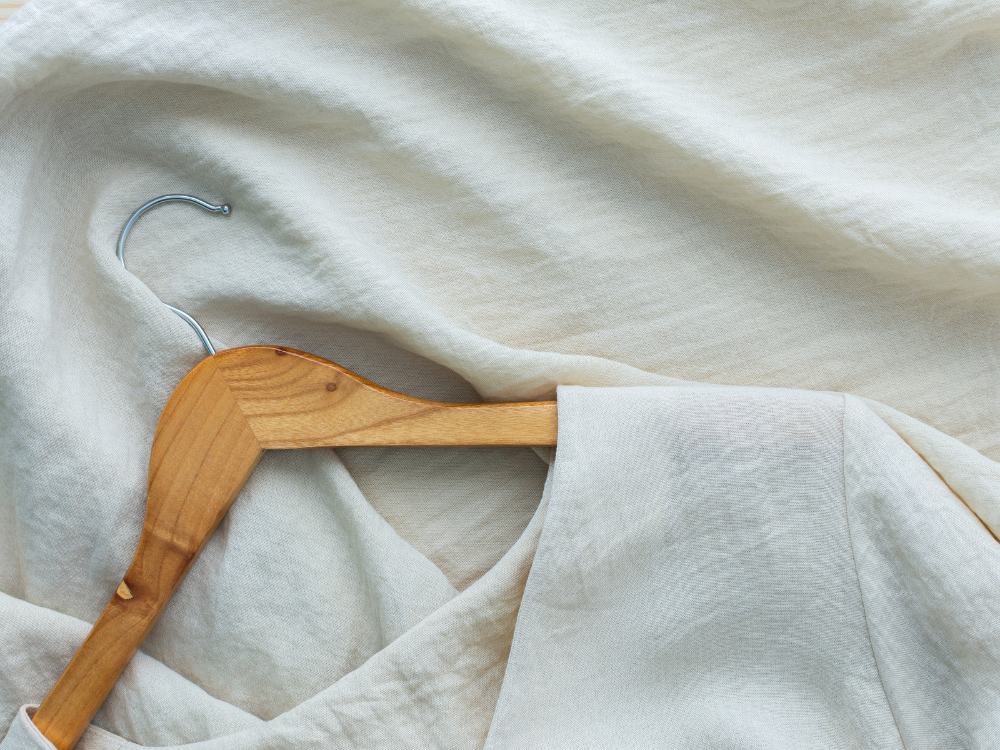
Linen is a durable fabric by nature, which means it’s pretty easy to care for, but there are some things to keep in mind that will help keep your favorite linen wedding guest dress partying for summer after summer.
First, to prevent shrinkage, wash linen in cold water using a natural laundry detergent.
Do not tumble dry (or if you do, only dry on low part-way). Then hang or lay flat to dry.
If you’re worried about those pesky wrinkles, rest assured knowing you can iron linen to your heart’s content. Linen can handle high heat and may also need a bit of spray starch for that crisp, clean look.
Be careful how you fold it. If a crease constantly forms in the same area, it can lead to tearing. It’s better to hang linen garb in your minimalist wardrobe.
7. Linen Vs. Other Natural Fibers
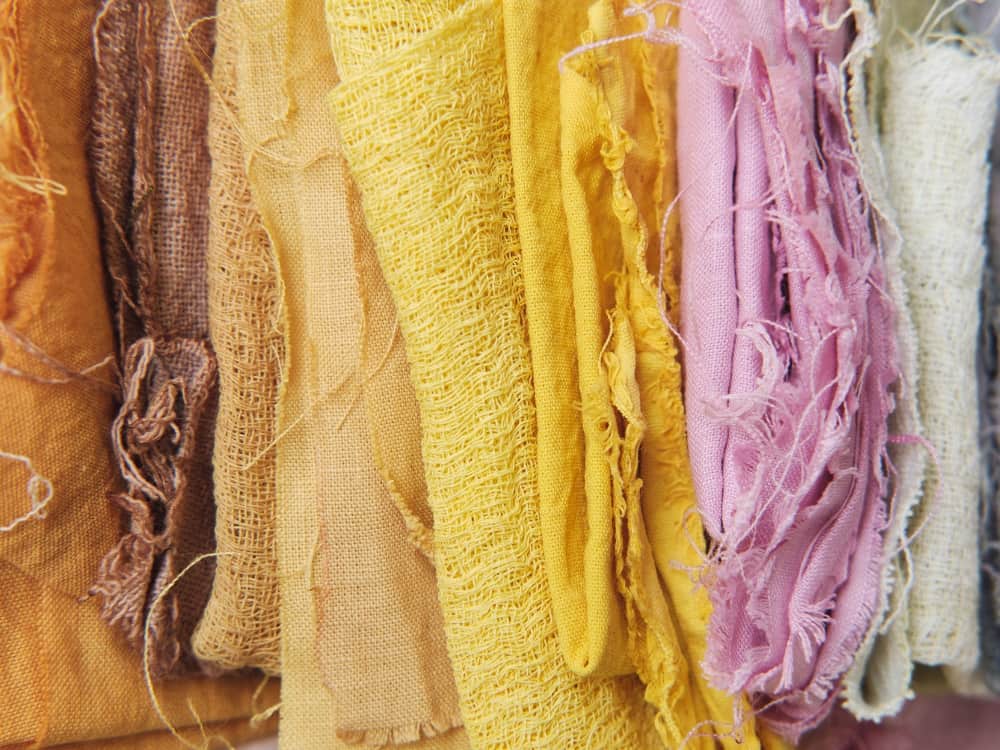
On our quest for more sustainable fashion, we’ve looked at lots of sustainable fabrics—bamboo fabric, lyocell, cactus leather, fish leather, modal fabric, and more—so how does linen compare to some of these?
For example, is linen more sustainable than cotton?
Linen Vs Cotton Sustainability & Performance
Is linen better than cotton fabric?
Yes, in a number of ways.
Linen fibers are stronger and more durable than cotton (you know, that thing that makes up denim and corduroy?).
For anyone obsessed with their new linen towels, there’s more good news in that linen dries much faster than cotton—which is perfect for those who can’t stand the smell of mildew-y bath towels (which is hopefully everyone).
Its water-wicking abilities mean that it will just draw in liquid (sweat or water) before drying quickly. Cotton, on the other hand, absorbs moisture rather than wicks, so it can lead to chafing and a soggy bottom during high output activities.
While cotton and linen are both hypoallergenic, linen tends to be a better choice for people with allergies.
In terms of sustainability, even the worst linen manufacturing far surpasses conventional cotton—AKA the dirtiest crop in the world. This is because linen requires significantly fewer inputs (water, land, and chemicals).
While organic cotton cuts out chemicals and uses less land, it still uses more water than linen cultivation.
There’s one big drawback to linen compared to cotton fabric. While they’re both natural fabrics derived from plants, flax takes longer to harvest and it’s more difficult to weave the fibers into fabric.
While linen is more durable than cotton fibers, the latter is more flexible and provides some additional stretch. For anyone who’s worn both, it’ll come as no surprise that cotton is softer—which is due to the fact that flax fibers are rougher and woven less tightly.
Hemp Vs Linen Sustainability & Performance
As far as natural fibers are concerned, linen is more comparable to hemp fabric than cotton, since both are lightweight, temperature regulating, UV resistant, and durable.
They also both come from low water-intensive, woody plant stalks.
The most significant difference is that hemp fibers are even longer than flax ones, 15 feet compared to 3 feet. That means hemp clothing is even more durable than linen, but consequently coarser to the touch.
Hemp is also more carbon hungry and generally more sustainable to harvest because the stalks are cut rather than completely uprooted. This both prevents erosion and ensures healthier soil that retains more moisture.
8. Brands Using Linen Fabric
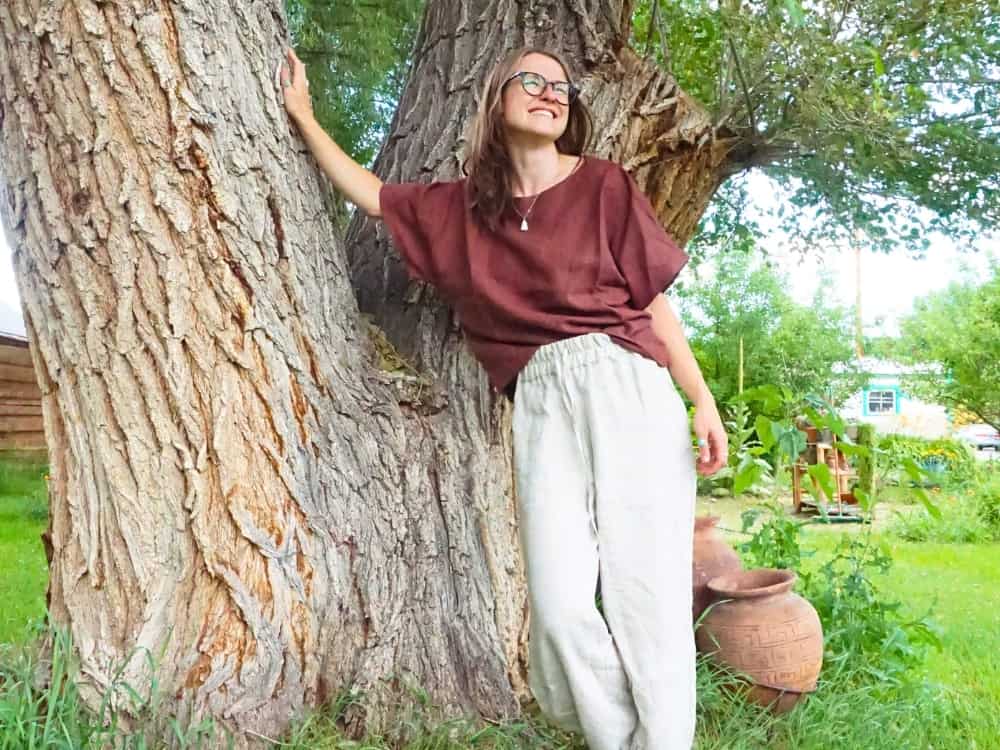
Sustainable and organic clothing brands are increasingly turning to linen fabric as a key ingredient in their eco-conscious collections.
In fact, we’re starting to see far more linen clothing brands and plus size linen fashion brands using the material almost exclusively.
Here are some of our favorites:
- Coyuchi: Coyuchi is known for using some of the best Earth-friendly materials—including organic linen textiles. From scarves to sustainable pajamas, we’d wrap up in them any day.
- MagicLinen: MagicLinen has been sharing the magic of linen with thousands of worldwide customers. They use OEKO-TEX-certified European flax, a super localized supply chain, and transparent linen production processes to craft their non-toxic shower curtains, bedding, clothing, and more.
- Linenfox: Their 100% Lithuanian-crafted linen garments include elegant closet staples that are fully made-to-order.
- Neu Nomads: Between a solar-powered dye house, family-owned fair trade factories, and organic linen cultivation, this brand ensures they offer seed-to-shelf sustainable linen fabrics.
- Wild Linens: In addition to pre-made products like pillow cases and bow-ties, the offer sustainably made linein fabrics, which is especially sueful for those looking to dabble in making their own linen goods.
Did you know we Have a Newsletter?
We cover the latest in sustainable living, fashion, zero waste, beauty, travel, finance and more…
Final Thoughts On What Kind of Material Linen is?
Once upon a time, the world’s oldest crafted textile was worn by Mesopotamian royalty and ancient Egyptian mummies.
While linen isn’t associated with as much cultural significance today, it’s easy to see why the fabric still ends up in our wardrobes—even after tens of thousands of years.
But is flax linen sustainable?
As with other sustainable fabrics, we can look at linen fibers on a spectrum of sustainability.
The most sustainable linen fabrics, like fair trade and organic linen, are much better for people and the planet than linen textiles that have been manufactured and grown with the use of chemicals, fertilizers, and pesticides.
But as consumers, we need to make sure we’re shopping for the best linen available.
Are you a linen lover yourself?
Plant a flax seed in a friend’s inbox to help us grow the conversation around this wonderful textile.
Pin these:
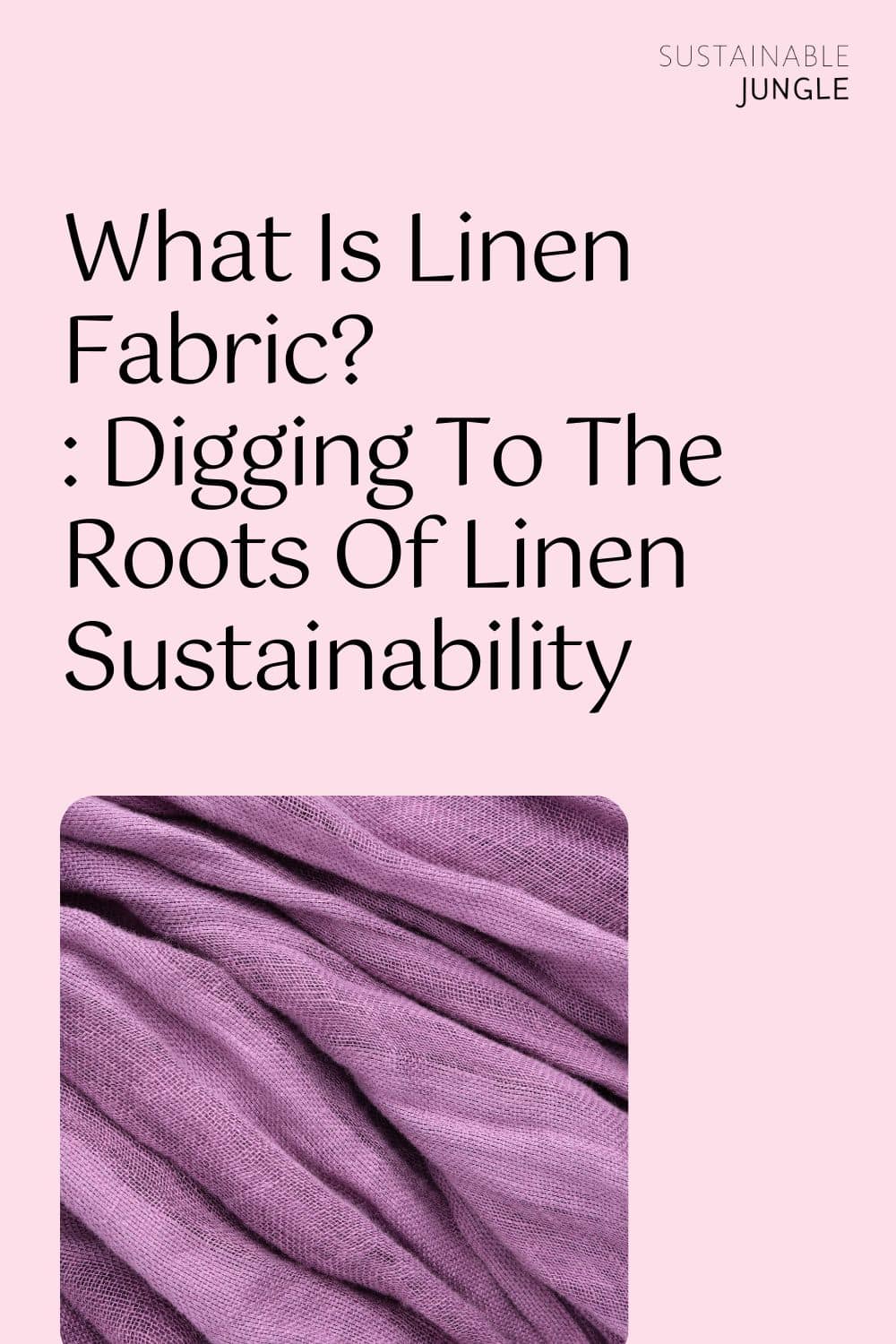
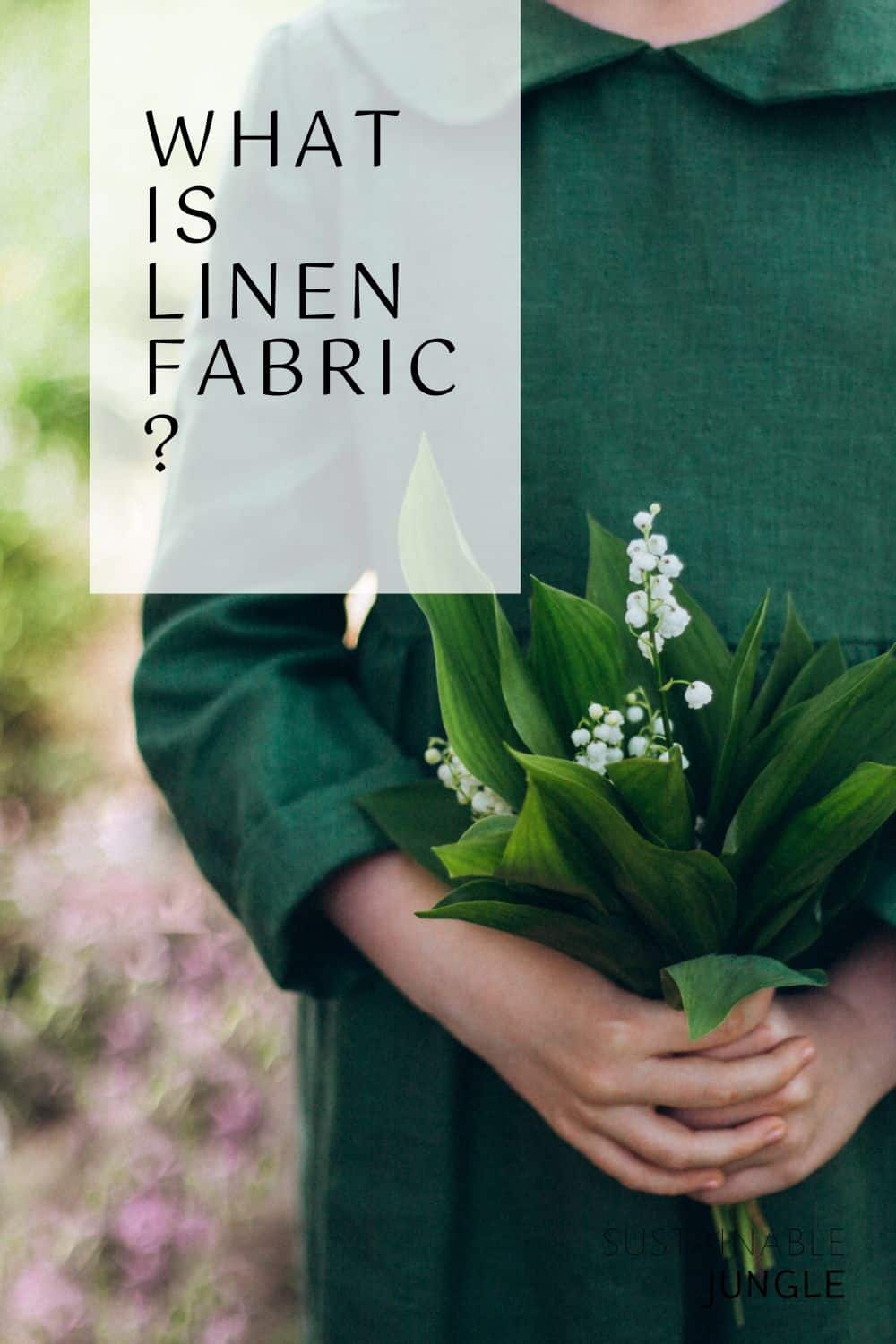


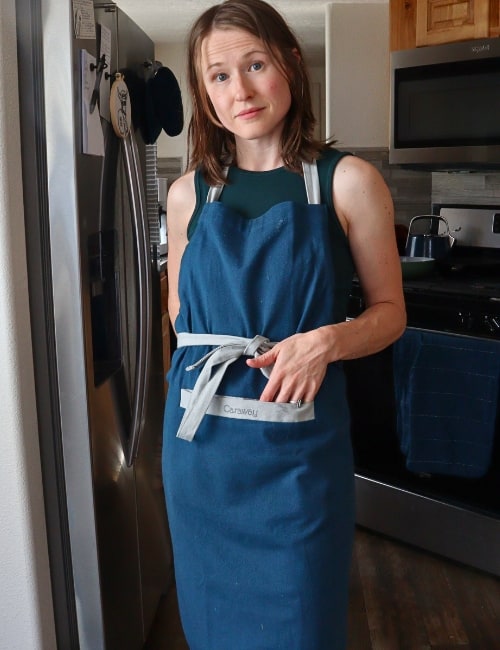
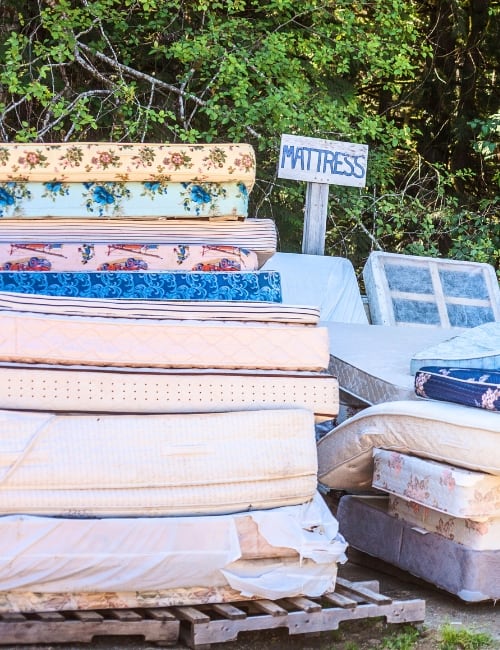
Thanks a lot for this very well-written and informative article! I used to know Linen only as an old-style material, but love to see the great new things coming into fashion right now. Thanks for all the background-info 🙂